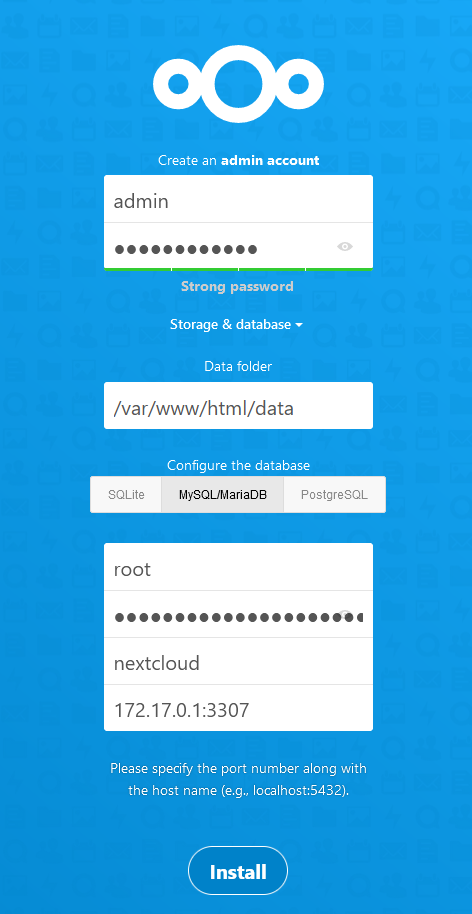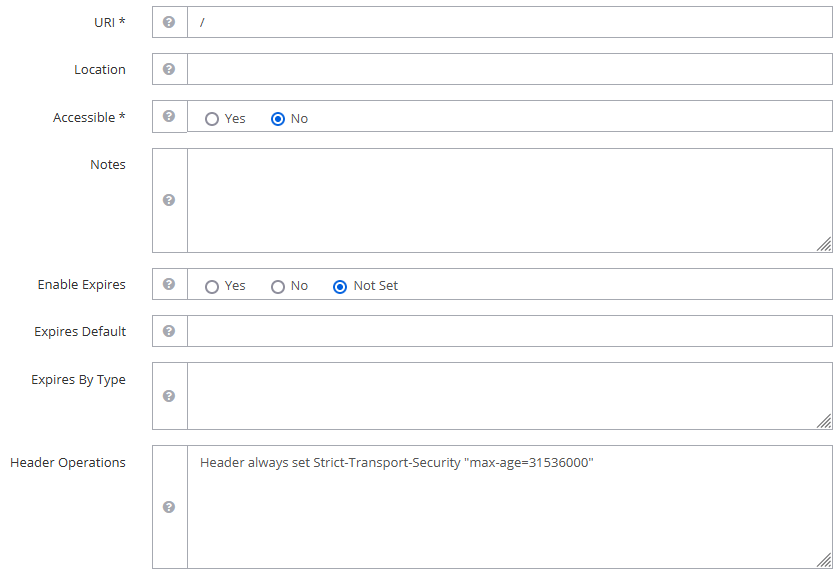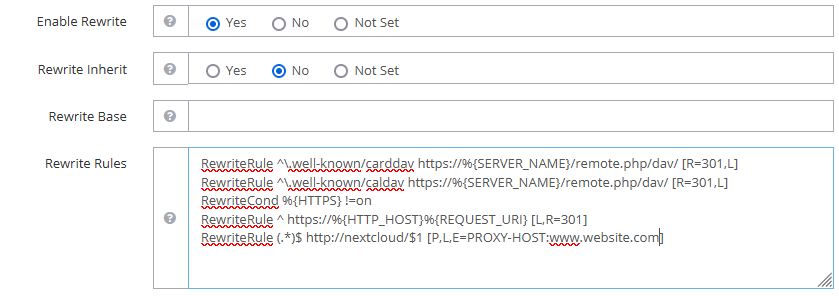Deploying Nextcloud
Docker-compose can be easily used to deploy Nextcloud on your own webserver using the official images available at Docker Hub. Apart from the main Nextcloud app, we go through how to set up the opensource online office suite Collabora which can serve as a replacement for Google Docs.
This set of notes is a compilation of instructions I have found online (forums, Reddit, Stackover etc.) and have worked for me on Ubuntu with Caddy for Nextcloud version 25.
Docker-compose
In addition to the main app, we also need to set up and configure efficient databases for Nextcloud e.g. MariaDB and Redis. It’s easy to use docker-compose and include all the required services
1. Create nextcloud directory
Begin by choosing a folder to store the Compose file docker-compose.yml. If your docker directory is /opt/docker, then create the folder /opt/docker/nextcloud/.
2. Create docker-compose.yml
Copy the following into docker-compose.yml.
version: '3.7'
volumes:
nextcloud:
db:
networks:
nextcloud:
driver: bridge
driver_opts:
com.docker.network.bridge.name: br-nextcloud
ipam:
driver: default
config:
- subnet: ${IPV4_NETWORK}.0/16
services:
# Nextcloud
app:
image: nextcloud:stable
container_name: nextcloud
networks:
nextcloud:
ipv4_address: ${IPV4_NETWORK}.2
restart: unless-stopped
ports:
- 127.0.0.1:9001:80
links:
- db
- redis
volumes:
- ${NEXTCLOUD_ROOT}/html:/var/www/html
- ${NEXTCLOUD_ROOT}/data:/media/ncdata
environment:
- NEXTCLOUD_DATA_DIR=/media/ncdata
- MYSQL_PASSWORD=${MYSQL_PASSWORD}
- MYSQL_DATABASE=nextcloud
- MYSQL_USER=nextcloud
- MYSQL_HOST=db
- REDIS_HOST=redis
- REDIS_HOST_PASSWORD=${REDIS_HOST_PASSWORD}
#- TRUSTED_PROXIES=${IPV4_NETWORK}.1
- NEXTCLOUD_TRUSTED_DOMAINS=${NEXTCLOUD_FQDN}
- OVERWRITEPROTOCOL=https
- PHP_MEMORY_LIMIT=2048M
- PHP_UPLOAD_LIMIT=2048M
depends_on:
- db
- redis
# MariaDB Database
db:
image: mariadb:latest
container_name: nextcloud-mariadb
networks:
nextcloud:
ipv4_address: ${IPV4_NETWORK}.3
restart: unless-stopped
command: ['--transaction-isolation=READ-COMMITTED', '--binlog-format=ROW', '--innodb_read_only_compressed=OFF']
volumes:
- ${NEXTCLOUD_ROOT}/mariadb:/var/lib/mysql
environment:
- MYSQL_ROOT_PASSWORD=${MYSQL_ROOT_PASSWORD}
- MYSQL_PASSWORD=${MYSQL_PASSWORD}
- MYSQL_DATABASE=nextcloud
- MYSQL_USER=nextcloud
# Redis
redis:
image: redis:latest
container_name: nextcloud-redis
networks:
nextcloud:
ipv4_address: ${IPV4_NETWORK}.4
restart: unless-stopped
command: redis-server --requirepass ${REDIS_HOST_PASSWORD}
# Collabora
collabora:
image: collabora/code
container_name: collabora
restart: unless-stopped
networks:
nextcloud:
ipv4_address: ${IPV4_NETWORK}.7
ports:
- 127.0.0.1:9980:9980
#extra_hosts:
#- "${NEXTCLOUD_FQDN}:${NEXTCLOUD_IPADDRESS}"
#- "${COLLABORA_FQDN}:${NEXTCLOUD_IPADDRESS}"
#volumes:
# - ${NEXTCLOUD_ROOT}/collabora/coolwsd.xml:/etc/coolwsd/coolwsd.xml
environment:
- domain=${NEXTCLOUD_FQDN}
#- server_name=${COLLABORA_FQDN}
#- aliasgroup1=
- dictionaries=en
- username=admin
- password=adminpassword
- extra_params=--o:ssl.enable=true
cap_add:
- MKNOD
tty: true
# Push Notifications
notify_push:
image: nextcloud:stable
container_name: nextcloud-notify_push
restart: unless-stopped
networks:
nextcloud:
ipv4_address: ${IPV4_NETWORK}.5
ports:
- 127.0.0.1:7867:7867
links:
- db
- redis
depends_on:
- db
- redis
- app
volumes:
- ${NEXTCLOUD_ROOT}/html:/var/www/html:ro
environment:
- PORT=7867
- NEXTCLOUD_URL=http://nextcloud/
- DATABASE_URL=mysql://nextcloud:${MYSQL_PASSWORD}@db/nextcloud
- DATABASE_PREFIX=oc_
- REDIS_URL=redis://:${REDIS_HOST_PASSWORD}@redis
entrypoint: /var/www/html/custom_apps/notify_push/bin/x86_64/notify_push /var/www/html/config/config.php
# Coturn server
coturn:
image: coturn/coturn
container_name: nextcloud-coturn
restart: unless-stopped
#network_mode: host
networks:
nextcloud:
ipv4_address: ${IPV4_NETWORK}.5
ports:
- 127.0.0.1:2052:2052/tcp
- 127.0.0.1:2052:2052/udp
#- 5349:5349/tcp
#- 5349:5349/udp
#volumes:
#- /etc/letsencrypt/live/cloud.darkhalo.science/:/certs:ro
command:
- -n
- --log-file=stdout
- --realm=${NEXTCLOUD_FQDN}
- --listening-port=2052
#- --tls-listening-port=5349
- --listening-ip=0.0.0.0
#- --relay-ip=${NEXTCLOUD_IPADDRESS}
- --external-ip=${NEXTCLOUD_IPADDRESS}
- --no-tlsv1
- --no-tlsv1_1
#- --cert=/certs/cert.pem
#- --pkey=/certs/privkey.pem
- --min-port=49160
- --max-port=49200
#- --user=test:test123
#- --no-multicast-peers
#- --lt-cred-mech
- --use-auth-secret
- --static-auth-secret=${COTURN_SECRET}
- Here, we have provided a subnet so the stack will be accessible at a known address, 172.28.0.x in this case.
- By specifying the ports as
127.0.0.0:xxxx:xxxx, the services will only be accessible to localhost or via a reverse proxy (next section). This prevents the ports from being exposed to external networks. When troubleshooting, it might be useful to remove127.0.0.1and test that the services can be accessed remotely from the external server ip address. - In this example, we have the main Nextcloud service running on port
9001. - For Collabora, the
domainvariable should be the domain name of the nextcloud server, not the collabora server. (ref)
3. Create environment file
The above docker-compose.yml relies on some variables which need to be defined.
These go into a .env file.
NEXTCLOUD_ROOT=/opt/docker/nextcloud
NEXTCLOUD_IPADDRESS=x.x.x.x
NEXTCLOUD_FQDN=cloud.domain.com
COLLABORA_FQDN=office.domain.com
IPV4_NETWORK=172.28.1
MYSQL_ROOT_PASSWORD=xxx
MYSQL_PASSWORD=xxx
REDIS_HOST_PASSWORD=xxx
COTURN_SECRET=xxx
- Chosse the NEXTCLOUD_ROOT directory accordingly.
- NEXTCLOUD_IPADDRESS is the ip address of the server.
- The two FQDNs are the fully qualified domain names where Nextcloud and Collabora will be available at.
- To generate random hex keys,
openssl rand -hex 32 - For hash keys,
openssl rand -base64 16 - Secure the passwords and secrets by making sure
.envis only accessible to root:sudo chmod 0700 .env - Check that the environmental variables work:
sudo docker-compose config
4. Start the container stack
In the /opt/docker/nextcloud directory, run
sudo docker-compose up -d
The first run will take a moment for the databases to be created and set up.
Configuring Reverse Proxy
For the server to be accessible from a web url, we configure a reverse proxy to direct the external requests to the appropriate internal ports without having the ports exposed externally.
Here, use the lightweight web server Caddy 2, and OpenLiteSpeed.
Caddy
The caddy configuration file is by default located at /etc/caddy/Caddyfile. Add the following sections for Nextcloud and Collabora.
# Nextcloud
@nextcloud host cloud.domain.com
handle @nextcloud {
header Strict-Transport-Security max-age=15552000;
encode zstd gzip
redir /.well-known/carddav /remote.php/dav 301
redir /.well-known/caldav /remote.php/dav 301
handle_path /push/* {
reverse_proxy http://127.0.0.1:7867
}
reverse_proxy http://127.0.0.1:9001
@forbidden {
path /.htaccess
path /data/*
path /config/*
path /db_structure
path /.xml
path /README
path /3rdparty/*
path /lib/*
path /templates/*
path /occ
path /console.php
}
respond @forbidden 404
}
# Collabora
@collabora host office.domain.com
handle @collabora {
encode gzip zstd
reverse_proxy https://localhost:9980 {
header_up Host {host}
header_up Connection "Upgrade"
header_up Upgrade websocket
transport http {
tls_insecure_skip_verify
}
}
}
- For the calendar and contact sync to function properly, we need to redirect and make sure
/.well-known/carddavand/.well-known/caldavare accessible. - For push service,
/push/has to be redirected to the coturn service. - There have been bugs allowing users to access files in the Nextcloud directory from the url. To ensure this does not happen, we specify files and folders to which access is forbidden.
- The configuration for Collabora is courtesy of (this forum post).
Other tips and configuration
At this point, hopefuilly your Nextcloud server is up and running and accessible from the outside world. Log in as admin and enter admin settings. Check if any warnings displayed.
5. Fix security warnings
-
Add the following to
config/config.php(ref):'trusted_proxies' => array ( 0 => '172.28.0.1', ), 'forwarded-for-headers' => array ( 0 => 'HTTP_X_FORWARDED_FOR', ), - Alternatively, use the command:
docker exec --user www-data nextcloud php occ config:system:set trusted_proxies 1 --value='172.28.0.1' - Check the correct IP value using:
docker network inspect nextcloud_nextcloud
6. Setup 2FA
-
Follow instructions here.
-
Execute command:
docker exec -u www-data -it nextcloud php occ twofactorauth:gateway:configure telegram
7. Cron job (ref)
- In the host:
crontab -e - Add the lines:
*/5 * * * * docker exec -u www-data nextcloud php cron.php
8. High Performance Backend
- Install app
docker-compose upfornotify_pushwill fail the first time since the required app is not installed.- Once initial setup for Nextcloud is complete, install
Client Pushapp. - Run
docker-compose up -dagain, which should complete without errors.
- Setup app
- Run the command:
docker exec -u www-data nextcloud php occ notify_push:setup https://cloud.domain.com/push -
Everything should pass if all goes well.
- If
push server is not a trusted proxyis encountered, let notify_push connect locally to the Nextcloud instance.- Add
nextcloudto `trusted_domains’ - Set
NEXTCLOUD_URL=http://nextcloud/indocker-compose.yml
- Add
- Run the command:
- Verification
-
Browser console should not have errors connecting to websockets.
- Using logs:
docker logs nextcloud - Using metrics:
docker exec -u www-data nextcloud php occ notify_push:metrics
If successful, connection counts should be more than zero:

-
9. Imagemagick
docker exec nextcloud bash -c 'apt update && apt-get install -y --no-install-recommends $(apt-cache search libmagickcore-6.q[0-9][0-9]-[0-9]-extra | cut -d " " -f1)'
10. Phone region
docker exec --user www-data nextcloud php occ config:system:set default_phone_region --value=US
11. Using Nextcloud in URL path
To use a path in the url e.g. domain.com/nextcloud/, set overwritewebroot and overwrite.cli.url in config/config.php accordingly:
docker exec -u www-data nextcloud php occ config:system:set overwritewebroot --value=/nextcloud
docker exec -u www-data nextcloud php occ config:system:set overwrite.cli.url --value=https://domain.com/nextcloud
12. Resetting configuration
To clear Nextcloud configuration and redo the setup, there are two options:
- Navigate to Nextcloud folder e.g.
/home/site.com/public_html/nextcloud/.- Delete the folder
data - Delete the file
config/config.php - Create a file
config/CAN_INSTALL
- Delete the folder
- If using
docker-compose, then simply remove the volumes e.g.docker volume rm nextcloud_db docker volume rm nextcloud_nextcloud
13. Updating Nextcloud
-
Nextcloud can be simply updated and restarted by
sudo docker-compose pull sudo docker-compose down sudo docker-compose up -d` -
However, Nextcloud can only be updated one major version at a time. In this case, specify the specific version in
docker-compose.ymle.g.image: nextcloud:25 -
After updating, verifying the security and setup warnings. If the warning
The database is missing some indexes. Due to the fact that adding indexes on big tables could take some time they were not added automatically.is obtained, run the following command (ref):sudo docker exec --user www-data nextcloud_app php occ db:add-missing-indices -
If MariaDB is updated, we can update the database as such:
source .env && docker-compose exec nextcloud-mariadb mysql_upgrade -uroot -p${MARIADB_ROOT_PASSWORD}
Docker
Docker can also be used manually without docker-compose. This can be useful if the web server provides a way to manage docker services e.g. CyberPanel.
1. mariadb (ref)
mariadb (MySQL replacement) is installed with Cyber Panel. However, the mysqld server binds by default to 127.0.0.1, which cannot be accessed from within a Docker container.
To enable the Nextcloud container to access mariadb, setup a separate mariadb container instance.
-
Use port
3307since3306is in use by host already. -
Add root password as environment variable:
MYSQL_ROOT_PASSWORD:*** -
Create and start container.
2. Nextcloud
-
Create nextcloud folder:
mkdir -p /home/cloud.site.com/public_html/nextcloud -
Create Nextcloud docker from CyberPanel.
-
Map volume
/var/www/htmlto/home/cloud.site.com/public_html/nextcloud -
Create and start container.
4. Initial set up
- Select
MySQL/MariaDBas the database and enter details:
CyberPanel/OpenLiteSpeed
Nextcloud
- In OpenLiteSpeed →
Virtual Host→ site → CreateExternal App:- Name: nextcloud
- URI: localhost:9001
- In OpenLiteSpeed, create reverse proxy using rewrite rules (ref):
Virtual Hosts→Context- Type:
Static - URI:
/ -
Enable HSTS by setting Header Operations:
Header always set Strict-Transport-Security "max-age=31536000"
-
Rewrite Rules to redirect (i) HTTP to HTTPS, (ii) HTTPS to application, (iii) other required paths.
RewriteRule ^\.well-known/carddav https://%{SERVER_NAME}/remote.php/dav/ [R=301,L] RewriteRule ^\.well-known/caldav https://%{SERVER_NAME}/remote.php/dav/ [R=301,L] RewriteCond %{HTTPS} !=on RewriteRule ^ https://%{HTTP_HOST}%{REQUEST_URI} [L,R=301] RewriteRule (.*)$ http://nextcloud/$1 [P,L,E=PROXY-HOST:cloud.domain.com]
- Restart OpenLiteSpeed
-
Debugging:
Debug Rewrite Rules:
-
in
Virtual Hosts→ website →Rewrite:Log Level: 9 -
Check error logs:
tail -f /usr/local/lsws/logs/error.log
-
OpenLiteSpeed does not support SetEnvIf for headers (e.g. env=HTTPS does not work) (ref).
Collabora
-
In Cyberpanel, create a new website e.g.
office.domain.com -
Set up reverse proxy:
- In OLS, add an
External App:- Type:
Web Server - Name:
collabora - Address:
localhost:9980
- Type:
- Add
Context:- Type:
Static - URI:
/ -
Rewrite Rules:
RewriteCond %{HTTPS} !=on RewriteRule ^ https://%{HTTP_HOST}%{REQUEST_URI} [L,R=301] RewriteRule (.*)$ http://collabora/$1 [P,L,E=PROXY-HOST:office.domain.com]
- Type:
- Add
Web Socket Proxy:- URI:
/ - Address:
localhost:9980
- URI:
- In OLS, add an
High Performance Backend
- Setup reverse proxy for the newly created virtual host in OpenLiteSpeed:
- In OLS, add
External App:- Name:
notify_push - Address:
localhost:7867 - Max Connections: 25
- Timeout: 60
- Name:
- Add
Context:- Type:
static - URI:
/push/ - Rewrite Rules:
RewriteRule (.*)$ http://notify_push/$1 [P,L,E=PROXY-HOST:cloud.domain.com]
- Type:
- Add
Web Socket Proxy:- URI:
/push/ - Address:
localhost:7867
- URI:
- In OLS, add
